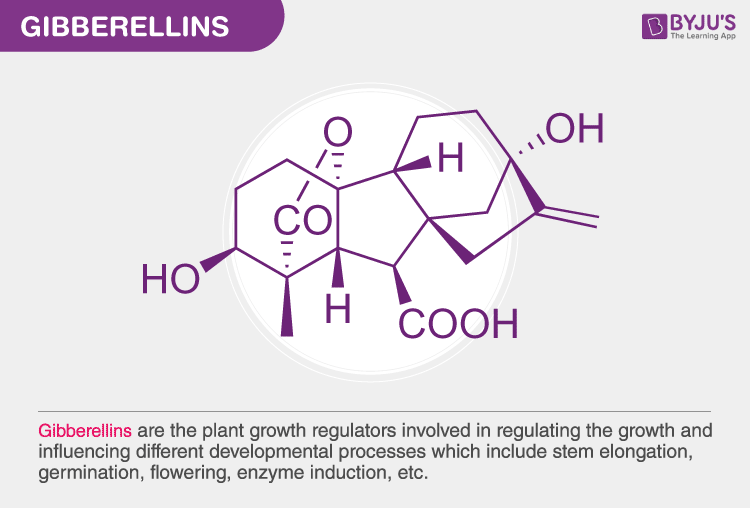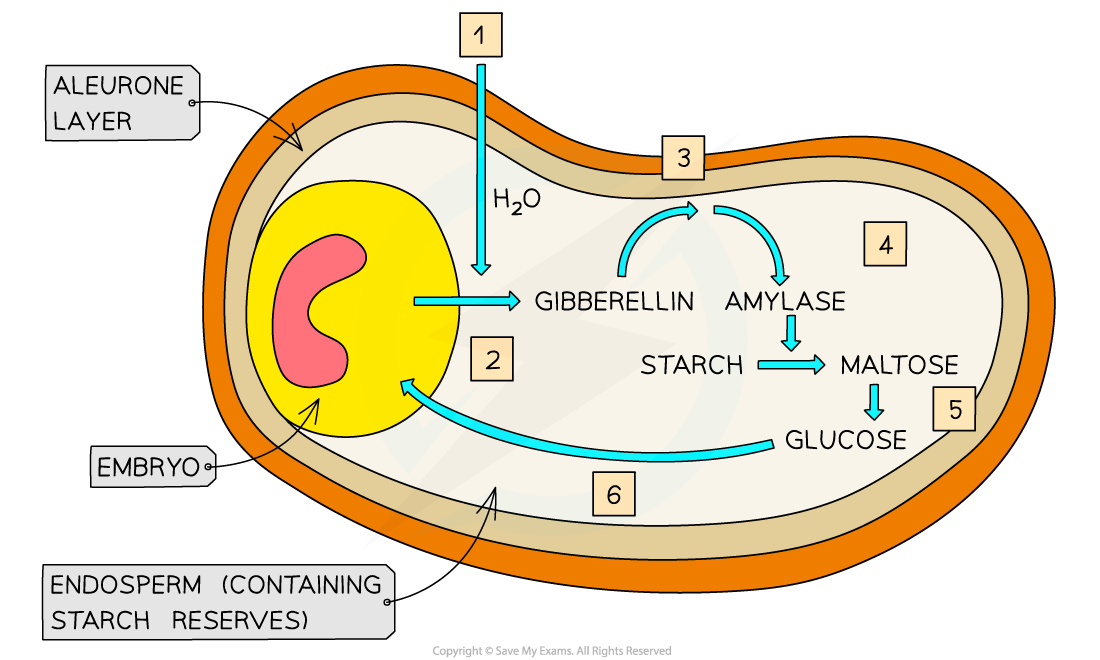Chapters
In this article, we will discuss the role of gibberellin in the germination of barley. But before discussing the role of gibberellins, first, we will discuss what are gibberellins, their functions, and their uses. So, let us get started.
Like humans, plants also have various kinds of hormones. A hormone refers to a chemical messenger that is produced by the endocrine glands to perform many metabolic activities inside the body. There are five major types of hormones in plants which are together referred to as plant growth regulators, inhibitors, promoters, and phytohormones.
The largest known classes of plant hormones are gibberellins which are discussed in this article in detail.

Gibberellins Defined
Let us formally define the gibberellins:
Any group of plant hormones that stimulate, i.e trigger stem elongation, flowering, and germination are referred to as gibberellins.
Now, let us describe these hormones in more detail.
Gibberellins are plant growth regulators which means that they are responsible for regulating the growth and influencing various developmental processes in plants. These processes include germination, stem elongation, flowering, enzyme induction, etc.
Gibberellins affect the growth of the plant in different ways. This group of hormones plays a central role in stem elongation. The stem of the plant begins to grow when it is applied in low concentration to a bush. The growth of the internodes is long enough to make the plant indistinguishable from climbing. Various genetic limitations in distinct dwarf varieties are overcome by gibberellins. More than 70 isolated gibberellins exist which include GA1, GA2, GA3, and so on. The most widely studied plant growth regulator is gibberellic acid.
Structure of Gibberellin
Gibberellin is a diterpenoid that creates the basis of molecules like vitamins A and Vitamin E. The figure below depicts the structure of gibberellin A1, which is the first known gibberellin.

All gibberellins possess the same structure and have many groups attached. These groups determine different functions of gibberellins in different tissues.
In the next section of the article, we will discuss the different functions of gibberellins.
Functions of Gibberellins
Germination of Seeds
Some seeds exhibit high sensitivity to light. For instance, tobacco and lettuce show poor germination when there is no light. Germination starts quickly when the seeds are exposed to sunlight. The need for light can be overcome if the seeds are treated with gibberellic acid.
Buds Dormancy
The plant buds formed in autumn are dormant till the next spring. Treating these buds with gibberellin helps to overcome this dormancy.
Growth of Roots
Gibberellins do not influence the growth of roots, however, they can inhibit the growth to some extent at a higher concentration in some plants.
Elongation of the Internodes
The most well-known effect of gibberellins on the growth of plants is internodes elongation. In several plants, for instance, maize and swarf pea, the genetic dwarfism can be overcome. For instance, the dwarf pea plants contain short internodes and expanded leaves, however, the internodes expand and look like tall plants if they are treated with gibberellin.
Gibberellins cast their impact by changing gene transcription. The following steps show how gibberellins function:
- The gibberellic acid enters the cell and binds itself to a soluble protein receptor
- This binds to a protein complex, i.e. SCF which further attaches ubiquitin to one or other DELLA proteins
- This triggers the destruction of DELLA proteins via proteasomes
- When the DELLA proteins are destructed, inhibition is released, and the gene transcription begins
In the next section of the article, we will discuss different commercial uses of gibberellins.
Uses of Gibberellin
- Commercially gibberellin is obtained from fungi and is employed to facilitate the process of seed germination
- In grapevines, it is sprayed and used to enlarge them
- In cucumber plants, it is employed to produce all-male flowers which assist the farmers in obtaining pollen of desired features that can be used for hybridization
- Biennial plants form flowers only in winters when the temperature is low. Applying gibberellin to these plants, help them to produce flowers irrespective of temperatures
- The dwarf plants varieties which are genetic mutants can be grown by applying gibberellins to them
In the next section of the article, we will discuss the role of gibberellins in Barley germination.
The Role of Gibberellin in Germination of Barley
- We have already discussed above that gibberellins are a type of plant growth regulator that plays a fundamental role in regulating the germination of seeds and elongation of stems
- When a parent plant sheds a barley seed, it is dormant, i.e., very little water is present in it and the seed is metabolically inactive. This is known as the state of dormancy
- A dormant state enables the seed to survive in extreme weather conditions. It stays in this state of dormancy until the conditions become right for successful germination. For instance, the seed survives a cold winter until temperatures become suitable in spring again
- The barley seed has an embryo, an endosperm, and an aleurone layer.
- Sub arrow) When the seed germinates, an embryo grows into a new plant
- An endosperm refers to a starch-containing energy store that surrounds the embryo
- An aleurone layer refers to a layer rich in proteins present on the outer edge of the endosperm
- When conditions are suitable, the seed begins to absorb water and starts the process of germination
- This triggers the embryo to produce gibberellins
- The molecules of gibberellin start to diffuse into the aleurone layer and trigger the cells present there to synthesize amylase
- In barley seeds, it has been noticed that gibberellins achieve this by controlling the genes involved in amylase synthesis. This results in an increase in the transcription of mRNA coding for amylase
- In the endosperm, the amylase hydrolyzes starch molecules to produce soluble maltose molecules
- The maltose is transformed into glucose and moved to the embryo
- The embryo can respire this glucose which provides the embryo with the energy required for its growth














Keep on teaching us,you are excellent teachers
This is great
Thanks a lot for this book,it really helped me a lot
It’s useful to me
Thanks a lot for your Better book!
It’s a perfect article, go ahead